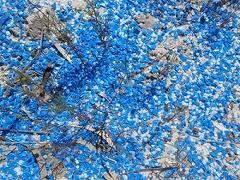Concentrations of microscopic plastic materials is polluting the marine environment and were greatest near coastal urban areas, the study has warned.
Researchers traced the ‘microplastic’ back to synthetic clothes, which released up to 1,900 tiny fibers per garment every time they were washed.
According to Mark Browne, an ecologist now based at the University of California, Santa Barbara, their findings have shown that about 80 percent of the environment was made up from smaller bits of plastic.
In order to identify how widespread pollution of microplastic was on shorelines, the team took samples from 18 beaches around the globe, including the UK, India and Singapore.
It had found that there was no sample from around the world that did not contain pieces of microplastic pollutants and most of them seemed to be fibrous, according to Dr. Brown.
Upon inspection at the different types of polymers the team was looking, they consist of polyester, acrylic and polyamides (nylon) among its major findings.
The research team had worked with a local authority in New South Wales, Australia to determine and confirm sewerage discharges were the sources of microplastic.
The team found those sewerage discharges positive of micoplastic which led it to conclude its suspicion had been correct.
Dr. Browne and colleague Professor Richard Thompson from the University of Plymouth, UK carried out a number of experiments to see what fibers were contained in the water discharge from washing machines.
They found some polyester garments released more than 1,900 fibers per garment, per wash which may not be that much but it shows how things can build up, observed Dr. Browne.
‘It suggests that a large proportion of the fibers they were finding in the environment, in the strongest evidence yet, was derived from the sewerage as a consequence from washing clothes.’
Dr. Browne, who is a member of the US-based research network National Center for Ecological Analysis and Synthesis, said the tiny plastic was a concern because evidence showed that it was making its way into the food chain.
Earlier research showed plastic smaller than 1mm were being eaten by animals and getting into the food chain.
Once the plastics had been consumed by these animals, it went from their stomachs to their circulation system and ended up in their cells.
